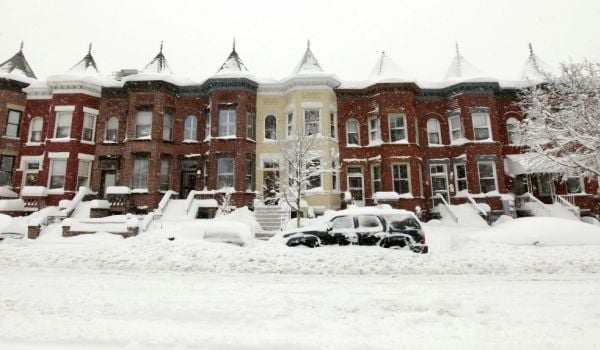It has been about two years since President Bush deployed TARP funds to help stabilize credit markets made unstable by subprime mortgages. Essentially, we were forgiving banks for not doing the proper due diligence on bundles of securitized mortgages, many of which had carried more risk than their rating suggested. We all know the story now, subprime mortgages rates adjusted upwards, people who couldn’t afford these homes in the first place defaulted, homes went into foreclosure, and massive amount of Assets became Troubled, freezing credit markets worldwide.
Those of us who don’t work at a bank tend to blame the banks, both commercial and investment. Commercial banks shouldn’t have approved loans for people so clearly unqualified for them, but the incentive to do so was strong because of the massive secondary market for mortgages; there were virtually no apparent risks at that level. And the investment banks, well they didn’t do their due diligence, and deserved to lose whatever capital they unintentionally put at risk by taking long positions on securitized bundles of subprime mortgages.
Talk to someone at a bank, as I did last Friday night, and they tend to blame the consumer who signed the dotted line on a mortgage they couldn’t afford, and Moody’s for failing to do the proper due diligence on the mortgage derivative products. There’s an argument to be made there, especially if you work at a bank, but I digress.
Well, then, what about a responsible home buyer who has lost massive amounts of home equity due to the collapse of the housing market, having done nothing “wrong” — like signing a mortgage they couldn’t afford — but investing in their own future by purchasing a new home? There are thousands of people current on their mortgage, but still “underwater” — the balance of their mortgage is higher than the assessed value of the home. What about them?
Two years since the TARP program debuted, HUD has developed a lifeline for those responsible homeowners who are victims of irresponsible banks (and, perhaps, irresponsible home buyers). According to this story from the Dayton Business Journal, starting September 7th, if you have a non-FHA mortgage, and you are both current on it and underwater, and your lender agrees to write off at least 10 percent of the remaining principal balance of your mortgage bringing the ratio between loan and home value to 115% or below, you will be granted the opportunity to qualify for a new, FHA-insured mortgage.
The Dayton Business Journal report cites a Neilsen Preview report that showed some interesting statistics. About one in four homes in the Dayton area are underwater. In one ZIP code, the median home value is $61,000, while the average mortgage balance is about $105,000. While it might be misleading to compare a median to an average, let’s do it anyway.
Let’s say you live in the 45402 ZIP (the one DBR used), and have a house of median value, and a mortgage of average outstanding balance; your loan-to-value ratio is about 175% You are current on your mortgage payments, and because of this, your house is not an investment, but rather a big money pit. Come September, you can apply for the FHA’s Short Refinance program.
But, Dayton Savings and Loan or whoever holds your mortgage will have to agree to write off enough of your loan to bring it down to 115% of your home value (in this case, $70,150), which is a whopping $34,850 write-down, or about one-third of the remaining principal. Only then will the FHA offer you a new loan on your house, and you will still have about negative $10,000 in home equity. This isn’t exactly a payday for responsible homeowners, nor is it a day of reckoning for really anyone. If anything, it’s a well-calculated measure to keep people from walking away from their homes. So many have been left vacant by foreclosure, it would be a shame to see homeowners not in default, but underwater — JP Morgan estimates there could be nine million households like this — walk away from their homes because of the effects of foreclosure all around them.
The federal government takes on almost no risk — they know you’re current on your mortgage, have good credit (well, at least 500), etc — and the bank is left to weigh their options: should they risk their clients walking away from the house entirely, or should they forfeit about one-third of the loan? Wouldn’t this program help more if the write-down were mandatory?
According to a report by Amherst Securities Group, reported on by Housing Wire, yes. In order to “avoid litigation from investors for the write-down, or achieve safe harbor, they must prove the loan is in imminent default.” That’s not easy to do when your mortgagee is current on their payments.
So, we have on our hands a federal program designed with the potential to help nine million responsible American homeowners, victims of the vagaries of the market, not greed or hubris, and few of them will see relief because of our strict adherence to the free market ideology and the profit principle. Except, of course when the banks are in trouble.
Who knows, maybe the housing market will rebound in a major way in places like Dayton, and the point will become moot. But as it is, nine million Americans are throwing money down a pit that they call home, and the banks are free to do as they please. It makes one wonder: who, exactly, does our government work for?

_600_350_80_s_c1.jpg)













